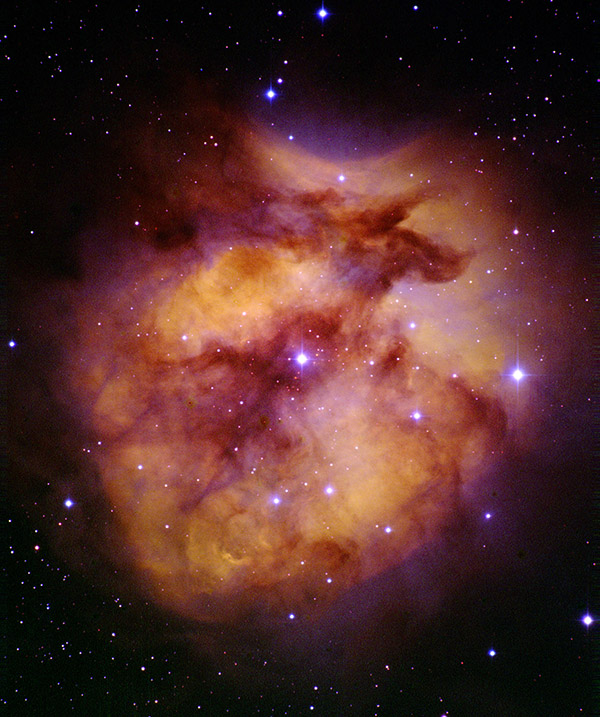 |
Colour-composite (RGB) image of the Cocoon nebula obtained from a combination of wide- and narrow-band images taken using the Wide Field Camera (WFC) on the 2.5 m Isaac Newton Telescope. Only part of the CCD #4 is shown (click on the image for a full display). The following colour code was used: broad-band B image (blue), and narrow-band Hβ and Hα images (green and red, respectively). Credit: Ángel R. López-Sánchez, Australian Astronomical Observatory / Macquarie University
[ JPEG ].
|
The atmospheres of main-sequence massive stars should have the same chemical composition as the interstellar material from which they formed. Researchers of the Instituto de Astrofísica de Canarias (IAC) and the University of La Laguna (ULL) have investigated the chemical abundances of the Cocoon Nebula, a close-by Galactic H II region, and its ionizing star, a main-sequence B-type star, using spectra obtained with the William Herschel Telescope (García-Rojas et al., 2014,
A&A,
571, A93). The results of this study indicate that the oxygen and nitrogen nebular abundance values, obtained from relatively bright emission lines, are different to those derived for the star. These abundance differences can be reconciled with the assumption of small temperature fluctuations, of the order of those found in other Galactic H II regions, existing in the nebula. The nebular abundances would be underestimated if these temperature fluctuations are not taken into account.
More information:
J. García-Rojas, S. Simón-Díaz, and C. Esteban, 2014, "The Cocoon nebula and its ionizing star: do stellar and nebular abundances agree?", A&A, 571, A93 [ Paper ].



